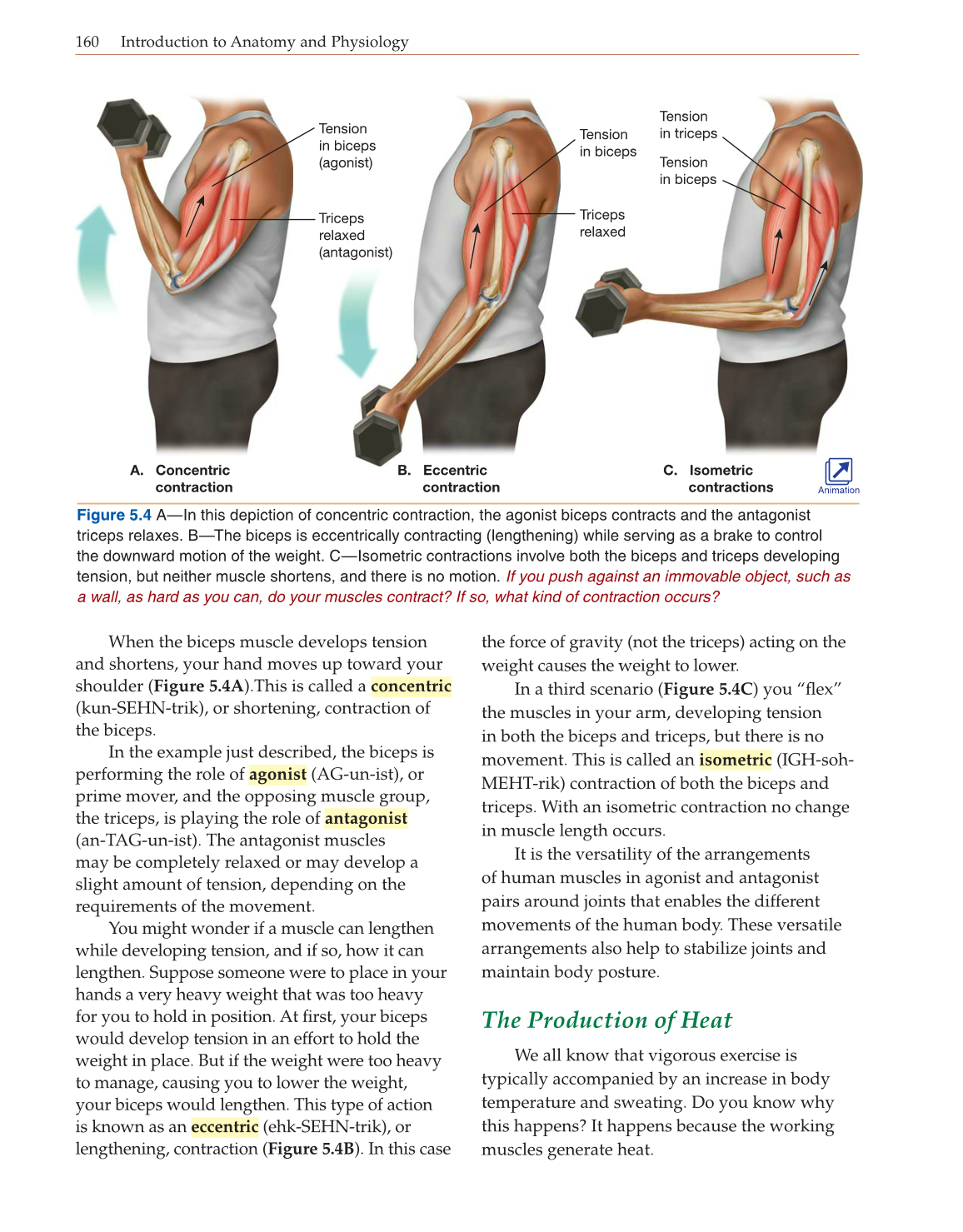160 Introduction to Anatomy and Physiology
When the biceps muscle develops tension
and shortens, your hand moves up toward your
shoulder (Figure 5.4A).This is called a concentric
(kun-SEHN-trik), or shortening, contraction of
the biceps.
In the example just described, the biceps is
performing the role of agonist (AG-un-ist), or
prime mover, and the opposing muscle group,
the triceps, is playing the role of antagonist
(an-TAG-un-ist). The antagonist muscles
may be completely relaxed or may develop a
slight amount of tension, depending on the
requirements of the movement.
You might wonder if a muscle can lengthen
while developing tension, and if so, how it can
lengthen. Suppose someone were to place in your
hands a very heavy weight that was too heavy
for you to hold in position. At fi rst, your biceps
would develop tension in an effort to hold the
weight in place. But if the weight were too heavy
to manage, causing you to lower the weight,
your biceps would lengthen. This type of action
is known as an eccentric (ehk-SEHN-trik), or
lengthening, contraction (Figure 5.4B). In this case
the force of gravity (not the triceps) acting on the
weight causes the weight to lower.
In a third scenario (Figure 5.4C) you “fl ex”
the muscles in your arm, developing tension
in both the biceps and triceps, but there is no
movement. This is called an isometric (IGH-soh-
MEHT-rik) contraction of both the biceps and
triceps. With an isometric contraction no change
in muscle length occurs.
It is the versatility of the arrangements
of human muscles in agonist and antagonist
pairs around joints that enables the different
movements of the human body. These versatile
arrangements also help to stabilize joints and
maintain body posture.
The Production of Heat
We all know that vigorous exercise is
typically accompanied by an increase in body
temperature and sweating. Do you know why
this happens? It happens because the working
muscles generate heat.
A. Concentric
contraction
B. Eccentric
contraction
C. Isometric
contractions
Triceps
relaxed
(antagonist)
Triceps
relaxed
Tension
in triceps
Tension
in biceps
(agonist)
Tension
in biceps
Tension
in biceps
Figure 5.4 A—In this depiction of concentric contraction, the agonist biceps contracts and the antagonist
triceps relaxes. B—The biceps is eccentrically contracting (lengthening) while serving as a brake to control
the downward motion of the weight. C—Isometric contractions involve both the biceps and triceps developing
tension, but neither muscle shortens, and there is no motion. If you push against an immovable object, such as
a wall, as hard as you can, do your muscles contract? If so, what kind of contraction occurs?
Animation
